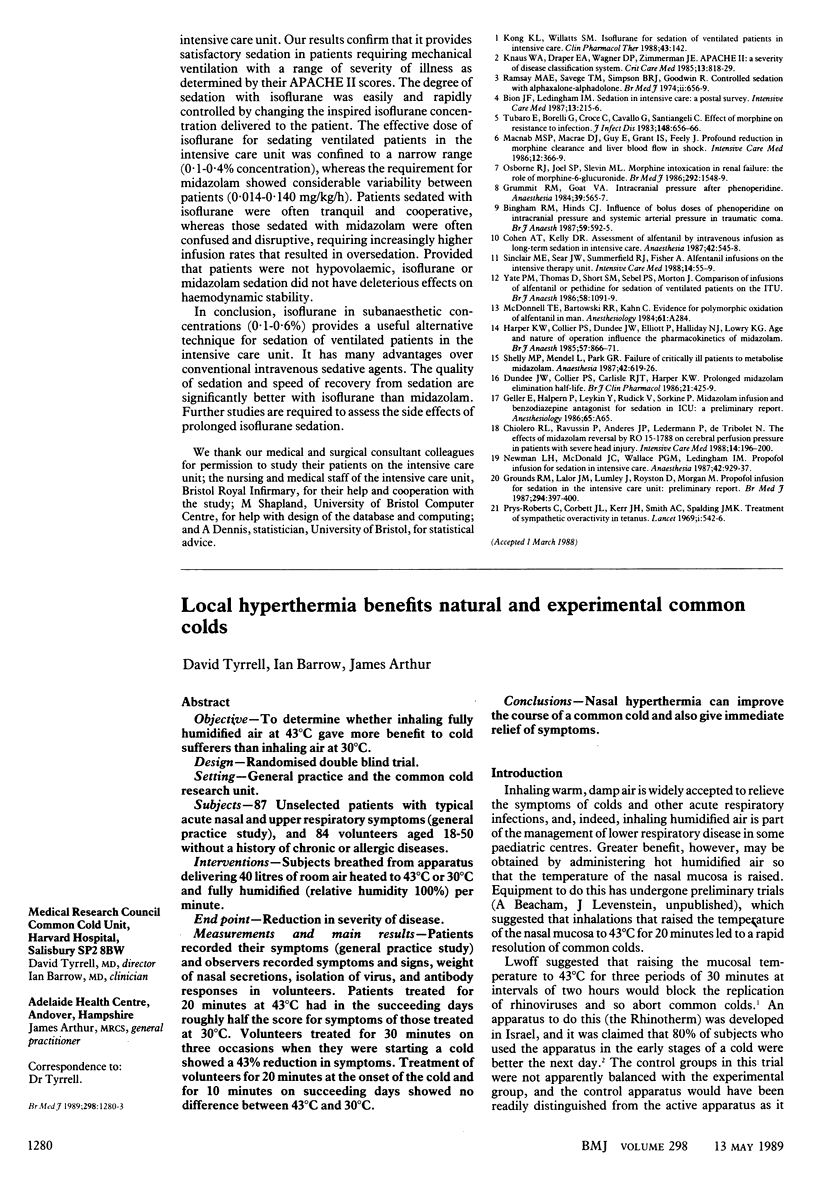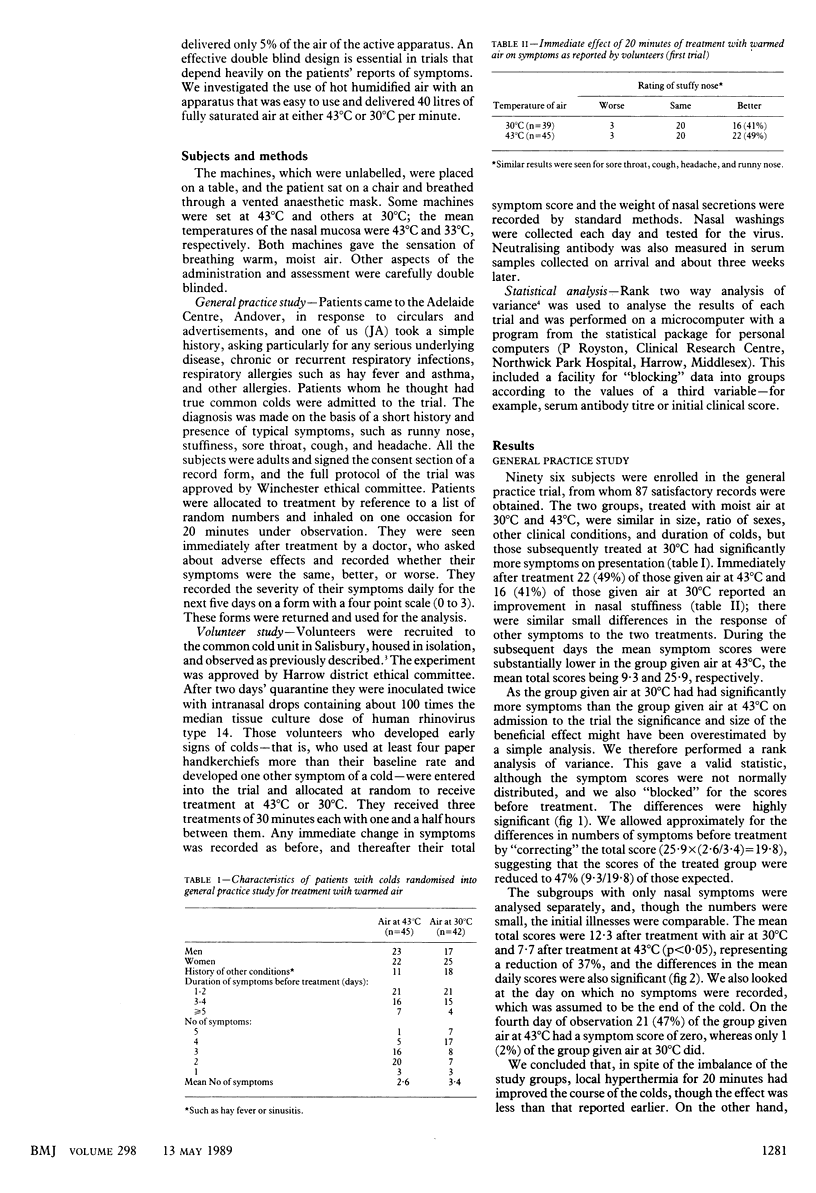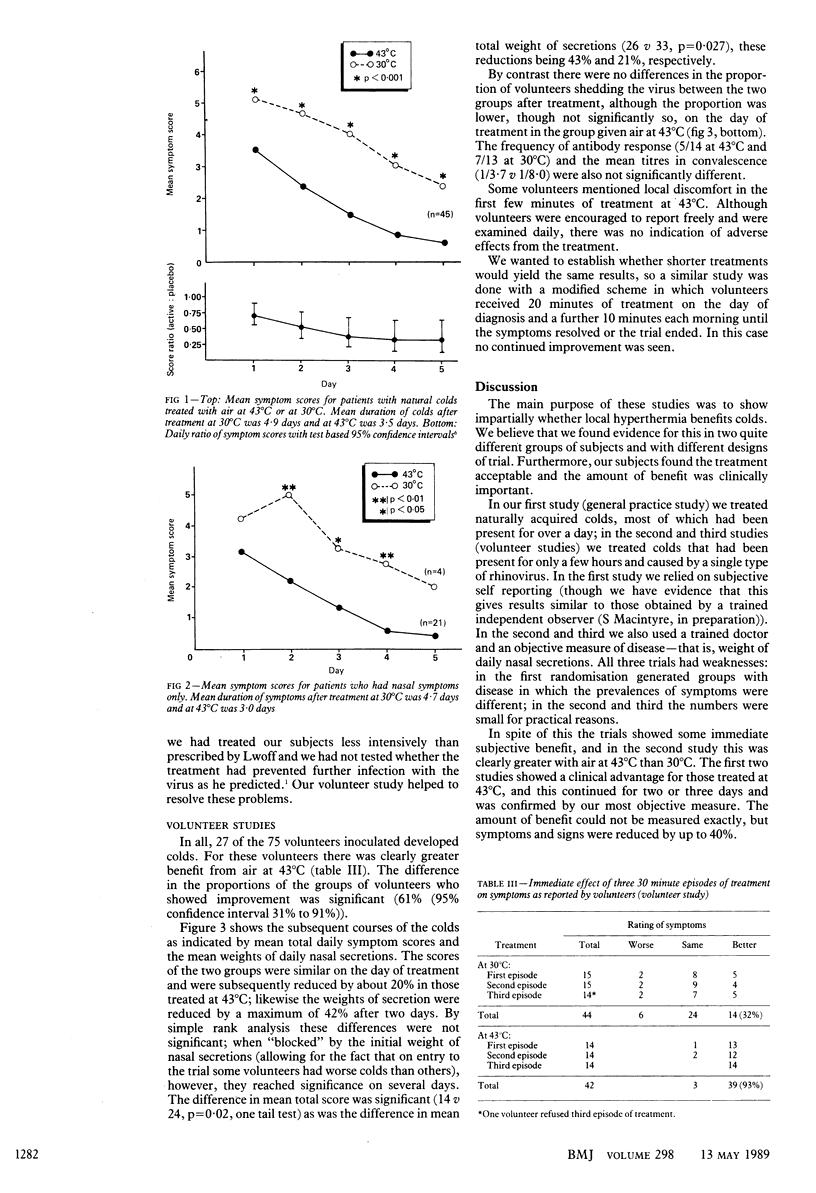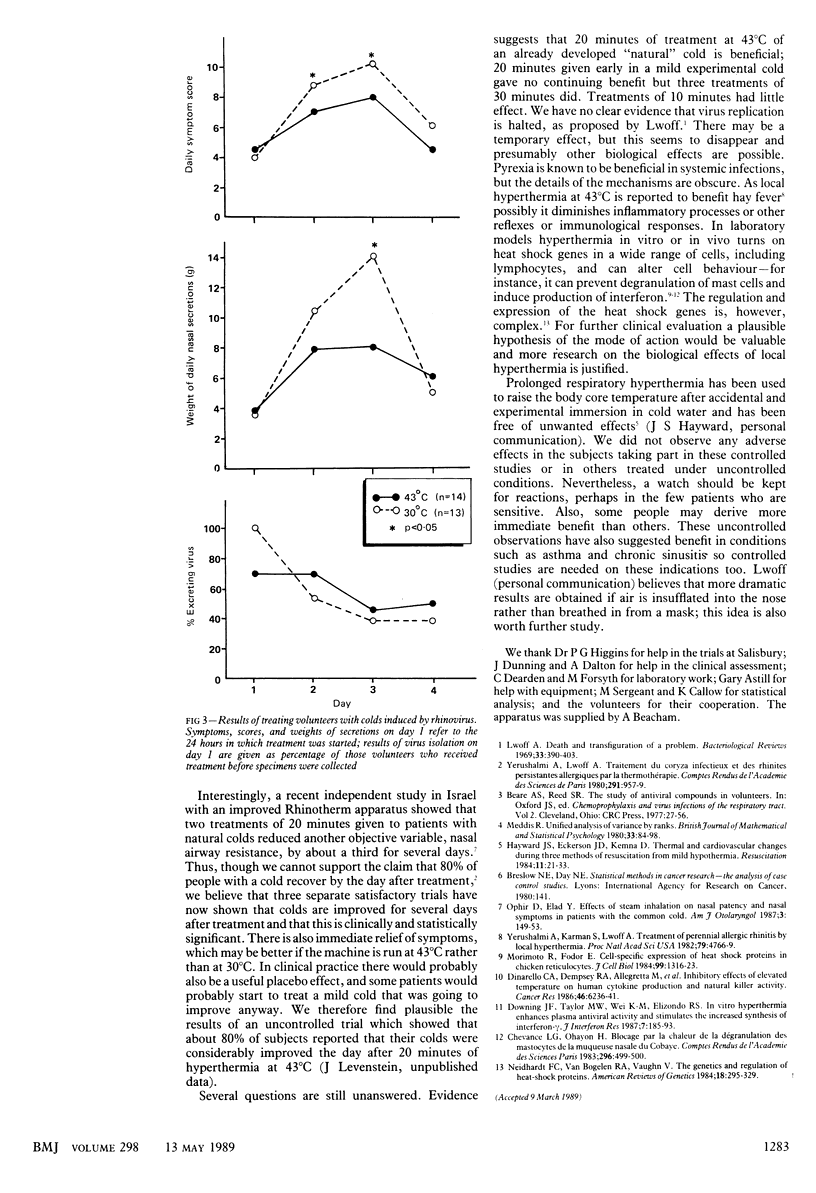Abstract
OBJECTIVE--To determine whether inhaling fully humidified air at 43 degrees C gave more benefit to cold sufferers than inhaling air at 30 degrees C. DESIGN--Randomised double blind trial. Setting--General practice and the common cold research unit. SUBJECTS--87 Unselected patients with typical acute nasal and upper respiratory symptoms (general practice study), and 84 volunteers aged 18-50 without a history of chronic or allergic diseases. INTERVENTIONS--Subjects breathed from apparatus delivering 40 litres of room air heated to 43 degrees C or 30 degrees C and fully humidified (relative humidity 100%) per minute. End point--Reduction in severity of disease. MEASUREMENTS and main results--Patients recorded their symptoms (general practice study) and observers recorded symptoms and signs, weight of nasal secretions, isolation of virus, and antibody responses in volunteers. Patients treated for 20 minutes at 43 degrees C had in the succeeding days roughly half the score for symptoms of those treated at 30 degrees C. Volunteers treated for 30 minutes on three occasions when they were starting a cold showed an 18% [corrected] reduction in symptoms. Treatment of volunteers for 20 minutes at the onset of the cold and for 10 minutes on succeeding days showed no difference between 43 degrees C and 30 degrees C. CONCLUSIONS--Nasal hyperthermia can improve the course of a common cold and also give immediate relief of symptoms.
Full text
PDF



Selected References
These references are in PubMed. This may not be the complete list of references from this article.
- Chevance L. G., Ohayon H. Blocage par la chaleur de la dégranulation des mastocytes de la muqueuse nasale du Cobaye. C R Seances Acad Sci III. 1983;296(10):499–500. [PubMed] [Google Scholar]
- Dinarello C. A., Dempsey R. A., Allegretta M., LoPreste G., Dainiak N., Parkinson D. R., Mier J. W. Inhibitory effects of elevated temperature on human cytokine production and natural killer activity. Cancer Res. 1986 Dec;46(12 Pt 1):6236–6241. [PubMed] [Google Scholar]
- Downing J. F., Taylor M. W., Wei K. M., Elizondo R. S. In vivo hyperthermia enhances plasma antiviral activity and stimulates peripheral lymphocytes for increased synthesis of interferon-gamma. J Interferon Res. 1987 Apr;7(2):185–193. doi: 10.1089/jir.1987.7.185. [DOI] [PubMed] [Google Scholar]
- Hayward J. S., Eckerson J. D., Kemna D. Thermal and cardiovascular changes during three methods of resuscitation from mild hypothermia. Resuscitation. 1984 Feb;11(1-2):21–33. doi: 10.1016/0300-9572(84)90031-5. [DOI] [PubMed] [Google Scholar]
- Lwoff A. Death and transfiguration of a problem. Bacteriol Rev. 1969 Sep;33(3):390–403. doi: 10.1128/br.33.3.390-403.1969. [DOI] [PMC free article] [PubMed] [Google Scholar]
- Morimoto R., Fodor E. Cell-specific expression of heat shock proteins in chicken reticulocytes and lymphocytes. J Cell Biol. 1984 Oct;99(4 Pt 1):1316–1323. doi: 10.1083/jcb.99.4.1316. [DOI] [PMC free article] [PubMed] [Google Scholar]
- Neidhardt F. C., VanBogelen R. A., Vaughn V. The genetics and regulation of heat-shock proteins. Annu Rev Genet. 1984;18:295–329. doi: 10.1146/annurev.ge.18.120184.001455. [DOI] [PubMed] [Google Scholar]
- Ophir D., Elad Y. Effects of steam inhalation on nasal patency and nasal symptoms in patients with the common cold. Am J Otolaryngol. 1987 May-Jun;8(3):149–153. doi: 10.1016/s0196-0709(87)80037-6. [DOI] [PubMed] [Google Scholar]
- Yerushalmi A., Karman S., Lwoff A. Treatment of perennial allergic rhinitis by local hyperthermia. Proc Natl Acad Sci U S A. 1982 Aug;79(15):4766–4769. doi: 10.1073/pnas.79.15.4766. [DOI] [PMC free article] [PubMed] [Google Scholar]


